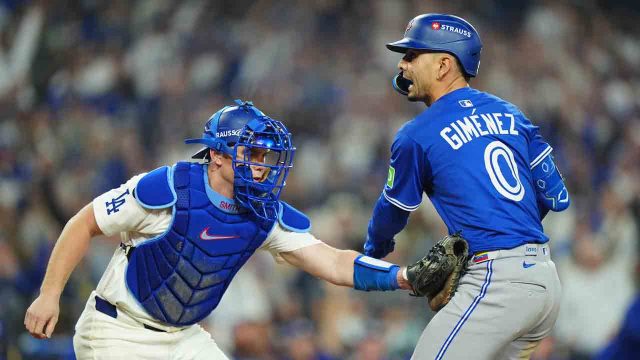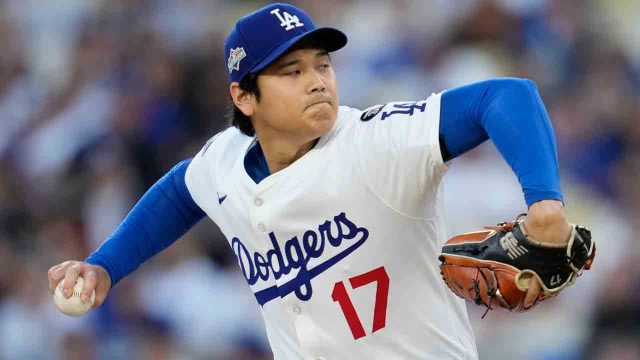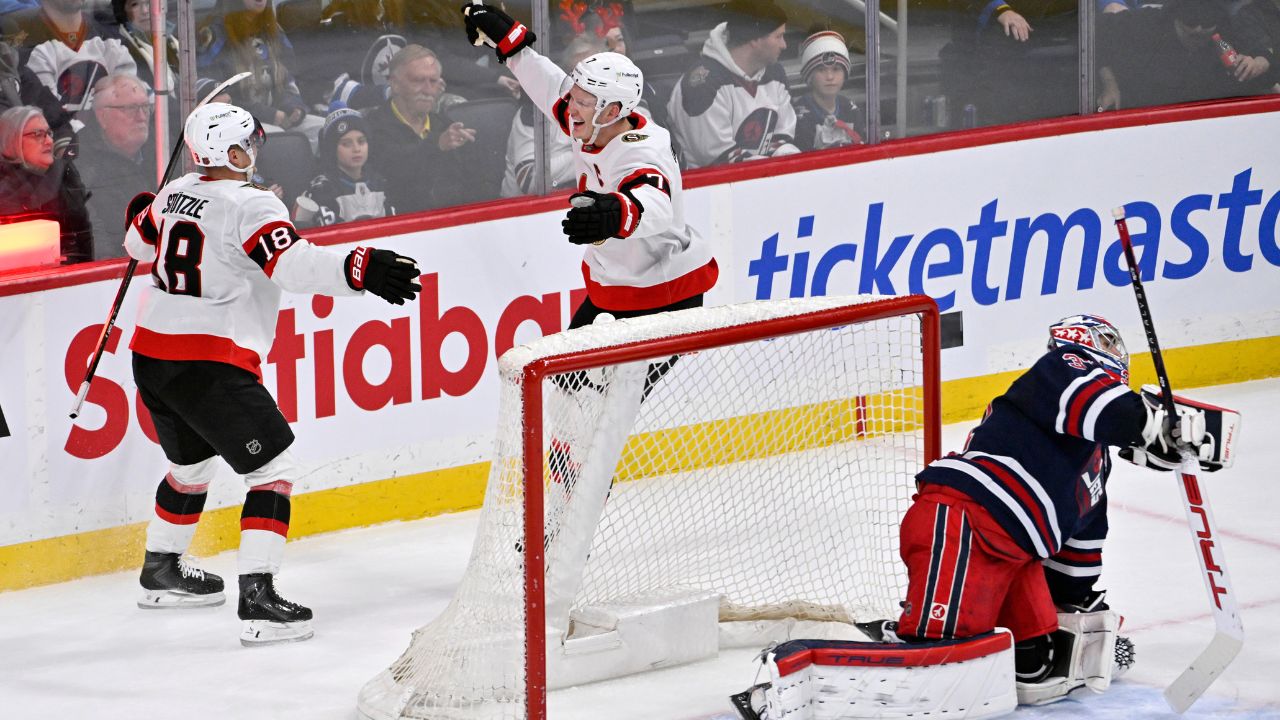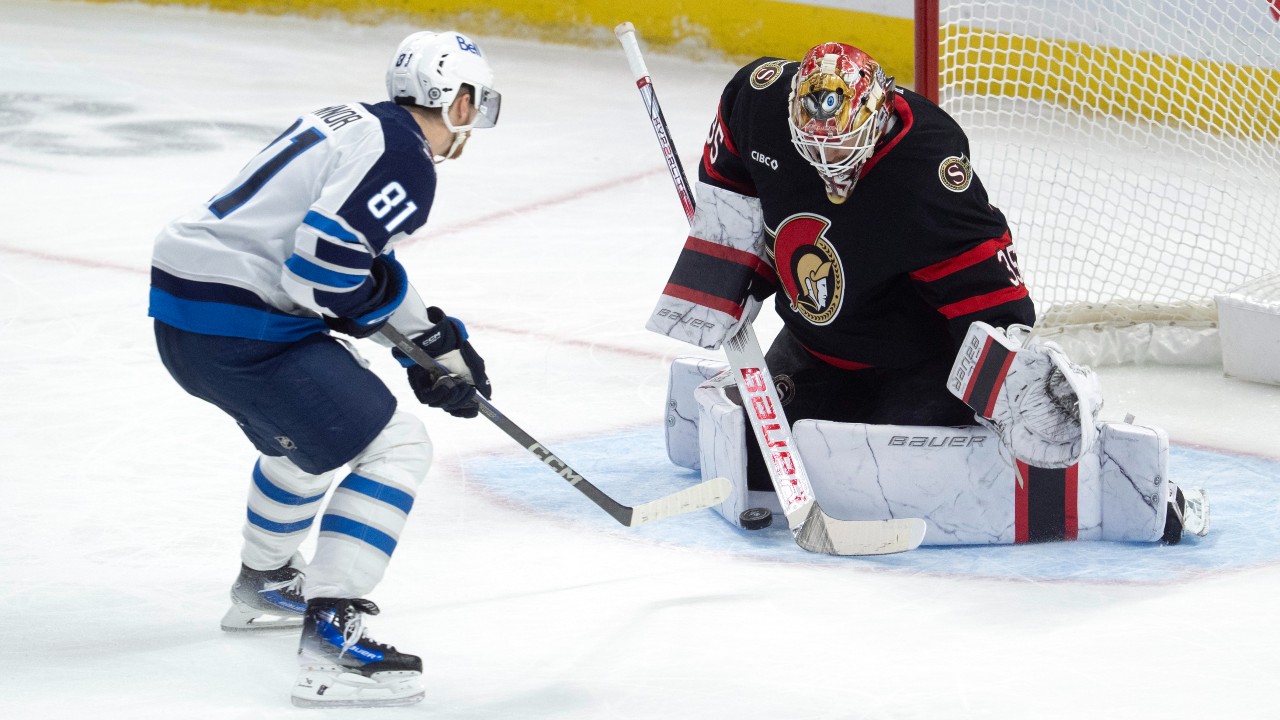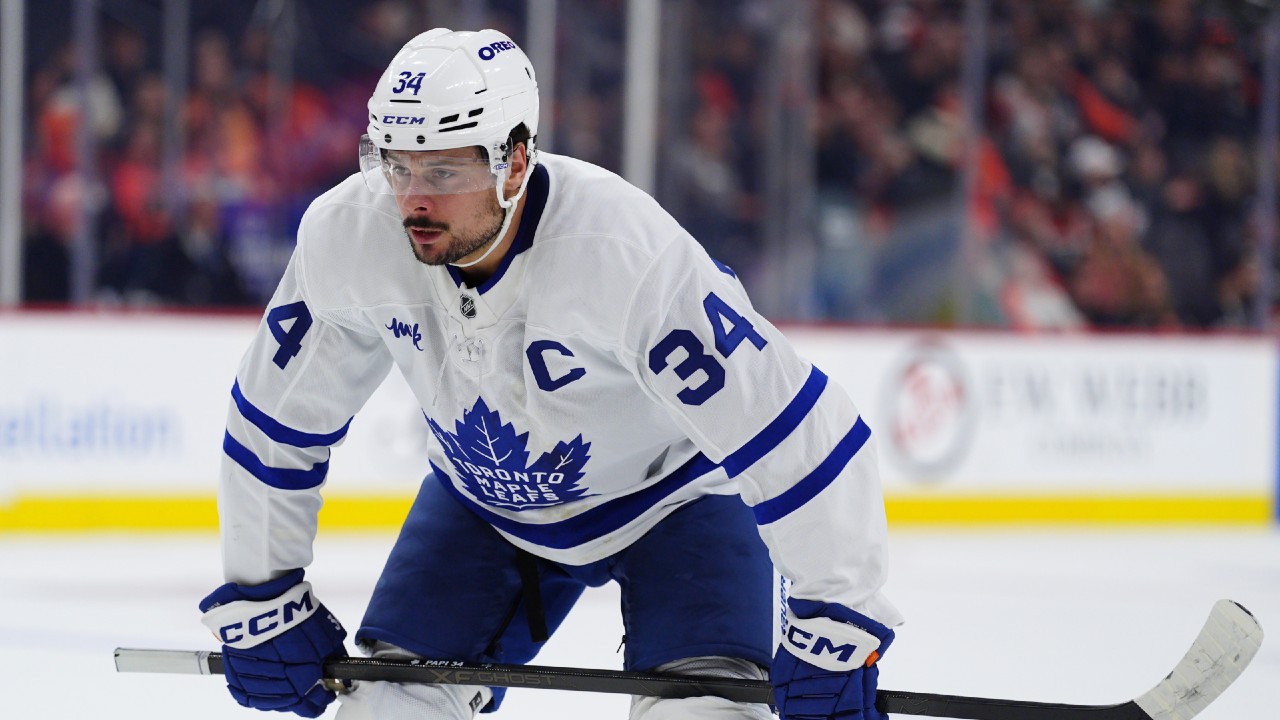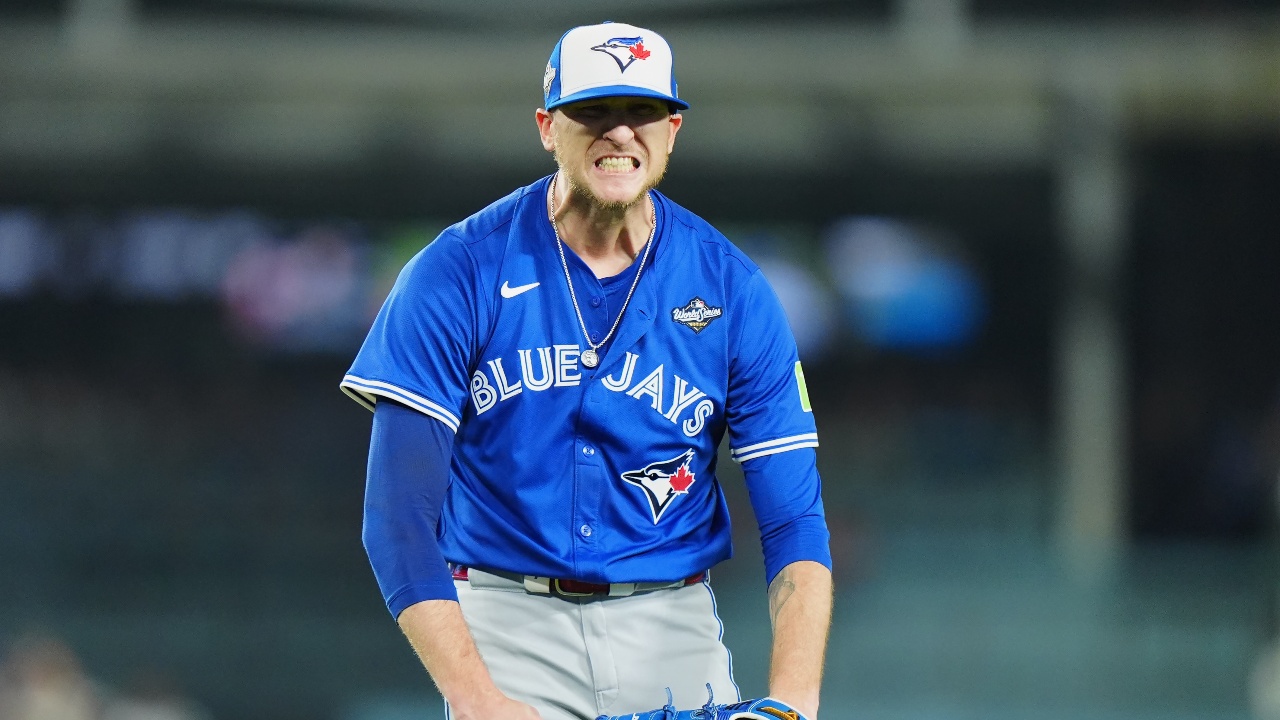
LOS ANGELES — After pulling just about every lever and twisting each dial he could in a Game 3 World Series classic on Monday night, Blue Jays manager John Schneider and his staff have precious little time to regroup, assess the damage and figure out what’s left for Game 4.
Is George Springer available? Who can give you how much out of the bullpen? How do you mitigate the aftershock of playing a doubleheader late into the night while strategizing with the urgency required for a critical game that begins only 17 hours later?
There are a lot of unknowns. But here are some best guesses heading into Tuesday night. First pitch is set for 8 p.m. ET / 5 p.m. PT on Sportsnet and Sportsnet+.
How should the Blue Jays line things up against Shohei Ohtani?
Bichette — DH
Lukes — LF
Guerrero Jr. — 1B
Kirk — C
Varsho — CF
Clement — 3B
Barger — RF
Kiner-Falefa — 2B
Gimenez — SS
Bench
Tyler Heineman
Ty France
George Springer
Davis Schneider
Myles Straw
-
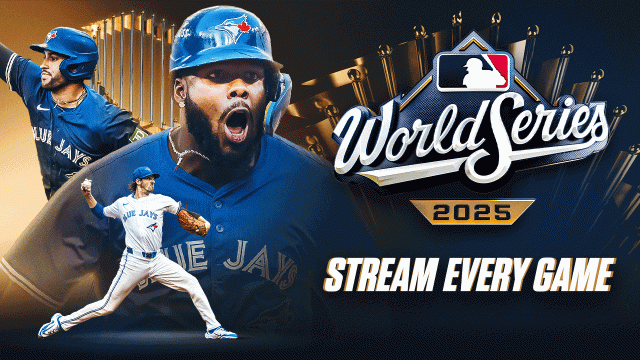
-
Watch the Blue Jays in the World Series on Sportsnet
The Toronto Blue Jays are looking for their first World Series in 32 years as they battle the Los Angeles Dodgers. Watch Game 4 on Tuesday at 8 p.m. ET / 5 p.m. PT on Sportsnet and Sportsnet+.
Springer’s availability is an enormous question mark. The Blue Jays described the injury that forced him from Game 3 as “right side discomfort” and he went for an MRI late Monday night. That’s all we know. It’s possible he dodged a bullet. It’s also possible Joey Loperfido’s in his place on the roster come first pitch.
Springer’s played through plenty this season, but any kind of injury to a hitter’s midsection can be debilitating for athletes who rely on explosive rotational movement. So we’ll assume he’s out and go forward with Bichette atop the lineup as the designated hitter.
The original plan was likely to have Bichette on the bench in Game 4 and keep him from starting at second base on three consecutive days. But Springer vacating the DH spot opens a compromise in which Bichette can spend most of the game off his feet to ensure he isn’t putting too much on his knee too soon.
If Springer remains on the roster, the question becomes whether he’s able to pinch-hit, potentially for Lukes or Barger against a left-handed reliever. Ohtani hasn’t pitched beyond the sixth inning or 100 pitches since his return to the mound earlier this season, so you know there will be opportunities late in the game. If Springer’s fully unavailable, it’ll limit Schneider’s flexibility, which is antithetical to how the Blue Jays roster is constructed.
Speaking of Ohtani’s workload limitations, you’d think the Blue Jays’ best bet would be to exercise patience early, make him work, and try to run up his pitch count. The guy played all 18 innings of a six hour, 39 minute baseball game a night earlier and reached base nine times. How prepared is he to repeat his mechanics for six innings?
But Ohtani isn’t hesitant with the zone. He throws plenty of pitches on the plate — his season-long zone rate is 52.4 per cent — particularly early in plate appearances. That mean Blue Jays hitters are likeliest to see Ohtani’s fastball in 0-0 and 0-1 counts, when he brings out the heater over 40 per cent of the time. And he’s strongly incentivized to throw plenty of strikes against tired Blue Jays hitters early in Game 4. So, if you want to do any damage against him, being aggressive in the first couple innings could be the better bet.
But if you let Ohtani get ahead, he puts you in the impossible predicament of guarding against seven distinct offerings ranging from 72 to 102 m.p.h. There aren’t too many pitchers out there throwing three different breaking balls with whiff rates north of 40 per cent. So, if the Blue Jays can’t get to Ohtani early, it could be a tough night.
How long will Shane Bieber’s leash be?
This has been an uneven post-season for Bieber, who wasn’t sharp in his divisional series start at Yankee Stadium, gave the Blue Jays six solid innings against the Mariners a week later, and was merely so-so in a Game 7 rematch with Seattle while pitching on regular rest.
Bieber located only 41 per cent of his Game 7 pitches in the zone, his lowest rate since his first start off the IL following Tommy John surgery. He also allowed four hits off his slider, which had been one of the best pitches in the post-season on a per-pitch basis — 61.1 per cent whiff rate; .054 xBA — entering the night.
Those two factors — strike-throwing and breaking ball effectiveness — will be particularly influential on how long Bieber goes vs the Dodgers. If he’s locating consistently and getting whiffs or weak contact with his secondaries, he can earn himself a third trip through the Dodgers lineup. But if his stuff and command looks like it did his last time out against Seattle, it would make tactical sense to limit Bieber at 18 hitters.
If you’re Schneider, you’re no doubt praying for the former rather than the latter, considering how much was asked of the bullpen in Game 3. And reliever availability — or lack thereof — could play a role in how unsteady Bieber would need to look for Schneider not to push him deep into his outing. But you’re still dealing with a guy who returned from Tommy John surgery only a couple months ago. So, don’t expect Bieber to throw 110 pitches regardless of how well he’s pitching.
How should the Blue Jays deploy their bullpen?
On Sunday’s off day, Schneider said every reliever in his bullpen could pitch in all three games at Dodger Stadium. But Monday’s game was effectively two. So, the calculus has changed.
Here are the pitch counts of the nine pitchers who appeared in that Game 3 epic:
Max Scherzer — 79
Eric Lauer — 68
Jeff Hoffman — 33
Brendon Little — 29
Seranthony Dominguez — 27
Louis Varland — 20
Braydon Fisher — 19
Mason Fluharty — 14
Chris Bassitt — 8
Let’s hit some easy ones first — Bassitt, Fisher and Fluharty are available. It’s worth wondering how prepared Bassitt — pitching in relief for the first time since pre-pandemic — is to throw on back-to-back days. He’s never done it in his big-league career, but Schneider might just have to find out if circumstances warrant, because Bassitt has been nothing short of exceptional stepping into an unexpected leverage role.
Another factor to consider is how often Fluharty’s faced Ohtani. The Dodgers superstar has now seen Fluharty twice in the series and doubled off of him in Game 3. Letting a hitter that talented get three looks at a reliever in close succession is like lighting a cigarette at the fireworks factory.
But the alternatives aren’t obvious. There’s no way Eric Lauer’s pitching Tuesday — or Wednesday, or possibly even Friday — after digging deep to throw 68 pitches in Game 3. Brendon Little’s going to be a strong yellow on the availability card after throwing 29 himself, including a four-pitch walk of Ohtani in the 17th. And Ohtani homered off Dominguez in Game 3.
Ultimately, if someone has to face Ohtani in his third trip ahead of Hoffman in the eighth or ninth, Chris Bassitt, come on down. Maybe the veteran’s deep bag of tricks can be the middle-inning antidote for a hitter the likes of which we’ve never seen. And if Bassitt can get Ohtani out in Game 4, his reward might be facing him again in Game 5.
Meanwhile, a note on Dominguez. His 27 pitches were the most he’s thrown since June and he’s pitched on back-to-back days only six times this year. He’ll surely be available in some capacity — it’s Game 4 of the World Series. But it’s worth considering that of those 27 pitches, the Dodgers swung at just 10, putting three in play and whiffing once. Did they have something on Dominguez? Or was their approach against him just that good? Either way, it must give pause when considering his next deployment.
Hoffman logged a substantial workload in Game 3 himself at 33 pitches. That ties his regular-season high and is only two shy of the post-season high he set in Game 6 of the ALCS. Yet, Hoffman was back on the mound the night following that outing, throwing 17 pitches to cap Game 7. So, we know he’s capable. And his average fastball velocity didn’t suffer, as he sat 95 in both outings.
Considering the importance of Game 4, Schneider has to be willing to go back to Hoffman if it maximizes his team’s chances of sealing a desperately needed win. That would leave things in tremendous flux for Game 5, but you can figure that out when you get there. And getting there tied 2-2, rather than down 3-1, is imperative.
Thankfully, there’s never any question about Varland, who should be presented as evidence of the repeated bout effect. A byproduct of his frequent usage is Dodgers hitters inevitably seeing him repetitively. But he has a deep enough arsenal to vary his sequences and the hitters that have seen him twice so far — Enrique Hernandez and Tommy Edman — aren’t the ones you’re most worried about in this lineup.


